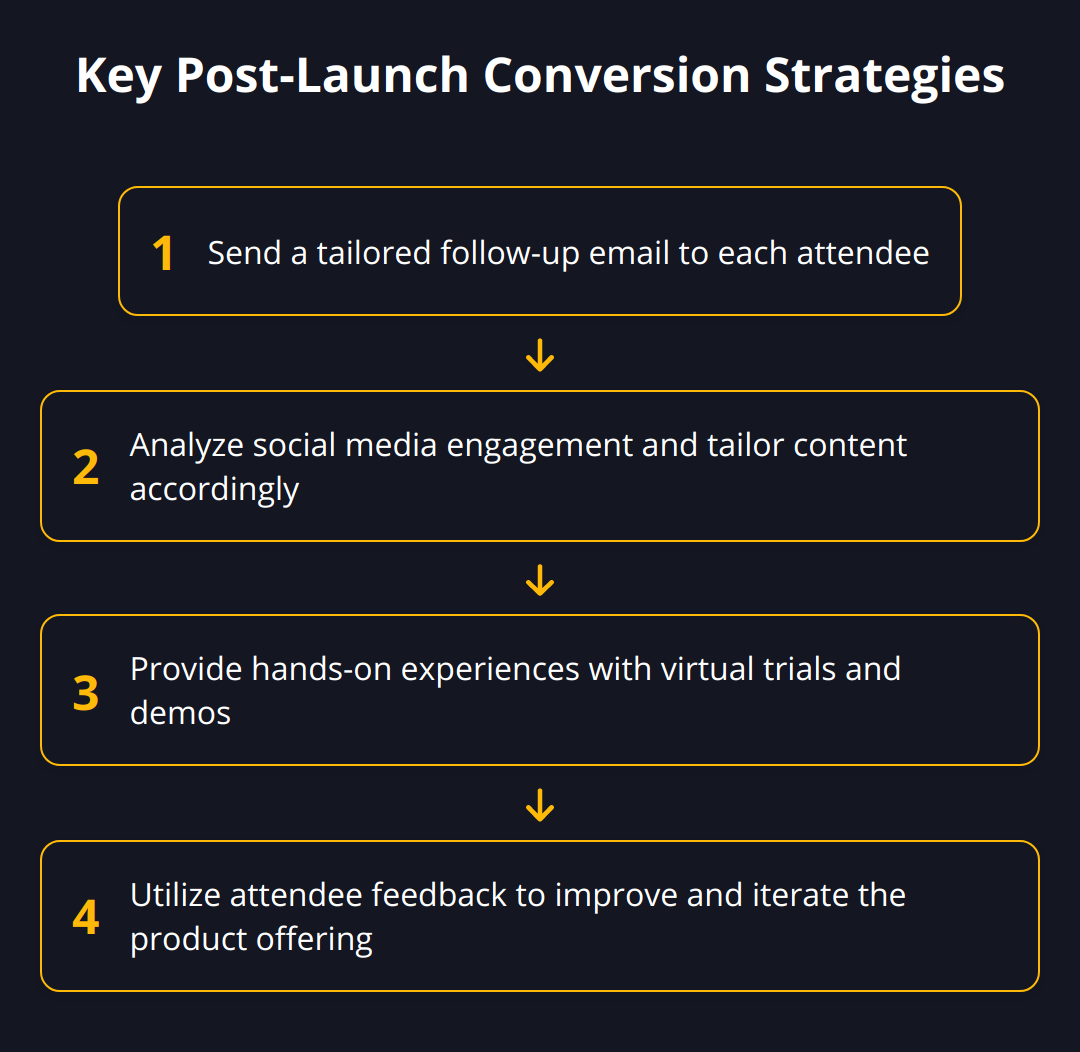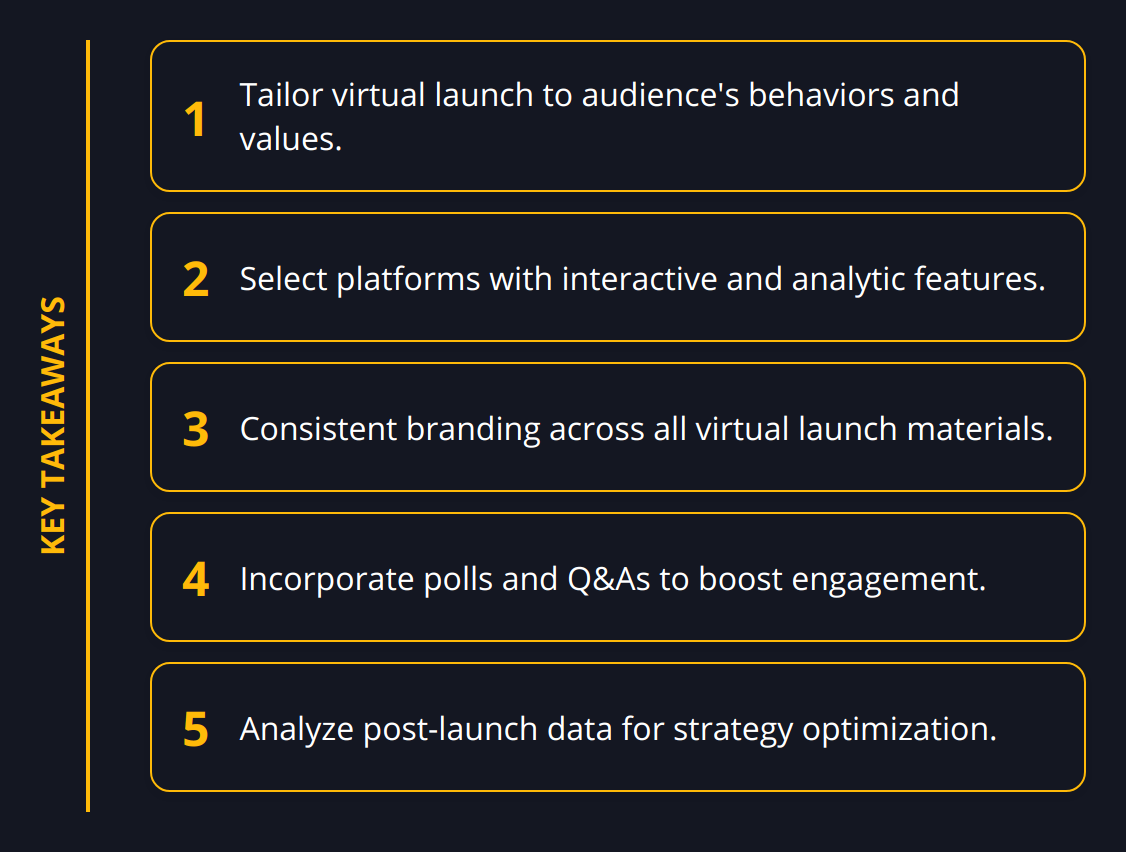Launching products in the virtual space has become a cornerstone of modern business strategy. We at Newroom Connect know the importance of a well-executed digital debut and the impact it can have on a product’s success.
From preparing with precision to engaging participants dynamically and leveraging post-launch strategies, there’s a spectrum of best practices that can make or break your virtual launch. In this guide, we’ll walk through tactical steps and the latest tech advancements to help you navigate this digital endeavor effectively.
Know Your Audience
Successful product launches start with a thorough understanding of the people you want to reach. Dive deep into who your potential customers are, what challenges they face, and how your product can solve their problems. Consider conducting surveys, focus groups, or one-on-one interviews to gather rich insights. Use this data to tailor your virtual launch, ensuring that every feature and message resonates with your audience.
When you study your audience, look beyond demographics. Explore their online behavior, preferences, and the values that drive their purchasing decisions. For instance, if your product is an eco-friendly gadget, target consumers who are active in sustainability-focused online communities.

Select an Interactive Platform
Choosing the right platform for your virtual product launch is like selecting a venue for a live event – it sets the tone, impacts the experience, and contributes to your event’s success. Opt for a platform that facilitates interaction and is known for reliability. Features such as live chat, Q&A sessions, and networking areas can enhance engagement, making attendees feel like they are part of the event.
Remember, accessibility is key. Make sure the platform is easy to navigate and is compatible across devices since your audience might join using smartphones, tablets, or PCs. Platforms that provide detailed analytics are particularly beneficial, as they offer insights into attendee behavior, which can be invaluable for measuring success and planning future initiatives.

Craft Your Branding Strategy
Brand consistency is imperative in a virtual environment. Everything from your logo to your messaging needs to be coherent across all virtual launch materials. Develop a comprehensive branding strategy that carries through to every piece of content you create. This includes presentations, product demos, email campaigns, and social media posts.
An impactful branding strategy should also encompass the tone of voice and visual style that will be used throughout the launch. This attention to detail ensures that when attendees think of your product, they associate it with a high-quality, seamless brand experience.
Practical Tips:
-
Identify at least three defining characteristics of your target audience for a personalized experience.
-
Choose a virtual platform that supports high-resolution livestreaming for a flawless product showcase.
-
Develop a social media content calendar to consistently promote your virtual product launch.
To sum up, understanding your audience deeply, selecting a fitting and engaging online event platform, and maintaining a cohesive branding strategy are foundational blocks for a thriving virtual product launch. As you move through the preparation phase, remember that every choice should be made with your audience and brand identity in mind.
Boosting Virtual Engagement
Engagement is the lifeblood of any virtual product launch. Not only does it keep your audience attentive, but it also promotes a sense of community around your product. Firstly, interactive features like live polls and Q&A sessions are non-negotiable. They’re not just tools; they’re your direct line to your audience’s thoughts and preferences. Use live polls to gather instant feedback or to decide on the fly which product feature to demonstrate next. With Q&A sessions, you encourage a two-way conversation, making attendees feel heard and valued.

Social media’s power in amplifying your message cannot be overstated. Platforms like LinkedIn and Twitter are not just promotional tools; they’re virtual megaphones that can dramatically expand your reach. Prior to your launch, tease content snippets to create buzz. During the event, encourage live tweeting or sharing, using a unique hashtag to track conversations and participant engagement. Post-launch, use these platforms to continue the dialogue with your audience and address any questions or feedback that surfaced during the event.
A well-orchestrated combination of live and pre-recorded content can make or break your virtual experience. It’s about balance and timing. Pre-recorded segments ensure a polished showcase of your product, while live sections bring spontaneity and a human touch. This mix keeps the presentation dynamic and prevents your audience from zoning out. Just like a live TV show with an in-studio segment followed by a pre-recorded report, your launch should be a tapestry of interwoven formats.

Quick Tips:
-
Use polling results live to steer the conversation or presentation.
-
Include a segment where real-time user-generated content is showcased.
-
Prepare pre-recorded demos with high production value to highlight your product’s features.
In every aspect, consider the attendee’s experience. If they’re interacting, they’re engaged. If they’re engaged, they’re more likely to remember your product and become advocates for your brand. Go beyond passive viewership to create a virtual arena where every attendee feels like an active participant. By doing so, you ensure that your virtual product launch is an event to remember.
Sustaining Post-Launch Buzz
After a dynamic virtual product launch, your work isn’t over; it’s critical to keep the momentum going to maximize the impact of your efforts. High-energy launches can lead to high-growth results if followed up with robust post-launch strategies tailored to nurture leads and convert interest into sales. Let’s delve into practical measures you can take to ensure the success of your product continues to climb.
Gather Valuable Insights
Once the virtual curtain falls, it’s time to sift through feedback. This step is non-negotiable. It’s not just asking attendees what they thought; it’s about listening, learning, and iterating. Promptly send out a survey using tools with built-in analytics to capture attendees’ immediate impressions and suggestions. This immediate data provides a crucial opportunity for quick adjustments to your product or to clarify any misconceptions.
Dive into your event platform’s metrics, too. High dwell time in your product demo room? That’s where your audience’s interest peaks. Use these insights to determine where to focus your ongoing marketing efforts.
Maintain Engagement with Targeted Follow-Up
Ignoring the power of follow-up is like leaving money on the table. Quick, personalized emails thanking attendees for their participation can significantly increase conversion rates. Email workflows that provide additional information based on the attendees’ behavior during the launch are sharp tools in your shed; they show you’re paying attention.
Social media should echo this personalized approach, offering a mix of content that recognizes individual contributions during the event and continues the conversation. Don’t just throw content into the void; engage in real conversations. Whether it’s a direct message or a comment on a feed, the follow-up should feel as real and engaging as the live event did.
Leverage Trials and Demos for Conversion
The phrases “seeing is believing” and “try before you buy” might be clichés, but they’re grounded in truth when it comes to product adoption. Offer virtual product trials or demonstrations post-launch to convert interested attendees into customers. Give clear, step-by-step guidance on how these trials work, and make the process as smooth as possible.
If your product is software, for instance, you might offer a limited-time free trial or a guided walkthrough of its capabilities. If it’s a physical product, consider augmented reality previews or sending out samples where viable.
Key Actionables:
-
Send out a feedback survey within 24 hours post-event.
-
Create email workflows that respond to specific attendee interests.
-
Use social media insights to shape your post-launch content strategy.
-
Offer easy-access trials that allow users to experience your product directly.
The path forward after a virtual launch should be a mix of listening, personalized communication, and hands-on experiences. By implementing these focused strategies, you’ll not only maintain the momentum but also strengthen the relationships that turn attendees into loyal customers. Just like the planning that went into your launch, the attention to detail post-launch will pay dividends in product adoption and brand advocacy. Keep the conversation going, stay responsive, and watch as your product takes its deserved place in the market.

Enhancing Virtual Product Launches with Tech
When you’re gearing up for a virtual product launch, incorporating state-of-the-art technology can transform a standard broadcast into an unforgettable experience. High-tech solutions like augmented reality (AR) and virtual reality (VR) are becoming indispensable tools, enabling presenters to showcase products in highly engaging and interactive ways. Meanwhile, green screen technology allows for the creation of visually captivating backgrounds that can transport your audience to any environment you imagine, enhancing the storytelling aspect of your presentation.
The integration of social media is pivotal in broadening the scope of your launch. With platforms like Twitter, LinkedIn, and Instagram, you can amplify your message far beyond your immediate network. This is not just about announcing your event; it’s about creating a participatory atmosphere where your audience can actively join the conversation, sharing their thoughts and enthusiasm in real-time. Live streaming also plays a vital role here, offering an immediate connection with a global audience who can interact with your launch as it happens.
But let’s talk practicalities. To really gauge the success of your virtual launch and to continuously improve, you must lean on data analytics. With today’s sophisticated analytics tools available on most platforms, you receive real-time feedback on how your audience interacts with your content. Which features are they excited about? Where do they spend most of their time? Use this data to refine your product messaging, improve future launches, and even guide product development.
Actionables to Harness Technology for Your Launch:
-
Integrate AR/VR demos to give attendees a ‘hands-on’ experience.
-
Use green screen effects to create a brand-immersive environment.
-
Stream your launch across multiple social platforms to maximize visibility.
-
Engage with your audience in real time through social media, encouraging shares and hashtags.
-
Analyze user interaction data post-event to optimize follow-up strategies.
With the right tech in play, your virtual product launch can leap from the screen into the minds and imaginations of your audience. This is where lasting impressions are made, where buzz is generated, and ultimately, where your product begins its journey toward market success.
Just remember: each piece of technology you implement should have a clear purpose and enhance, not detract from, your product’s story. Make each tech choice count.
For further insights on how to implement AR and VR in your strategies, consider exploring our blog post on AR Showroom Best Practices. Additionally, if you’re curious about capturing and analyzing attendee feedback, our guide on Attendee Feedback for Virtual Trade Fairs is a valuable resource.
Wrapping Up
Successfully launching a product in the virtual realm depends on your ability to connect with audiences on a new level. Engagement carries a different weight when you can’t shake hands; it revolves around how well you can captivate, interact with, and leave a lasting impression on attendees from behind their screens. At Newroom Connect, we understand these nuances and offer platforms that are designed to make your virtual launches both memorable and effective.

The key takeaways from our comprehensive guide to virtual product launches stress audience understanding, platform interactivity, brand consistency, and ongoing engagement. While these elements are vital individually, their collective application is what will set your product apart in a bustling digital marketplace. Keep these pillars in mind:
-
Prioritize understanding your audience’s detailed profile for a personal touch.
-
Choose a platform that boasts interactive features to keep the conversation lively.
-
Ensure that your brand message is unwavering across all channels.
As technology evolves, so should your launch strategy. Harnessing cutting-edge tools like AR and VR can transform a simple showcase into an immersive product experience. The use of such technologies during your launch can not only elevate the presentation but also serve as a powerful demonstration of your brand’s innovation.
Don’t forget, every virtual product launch offers a reservoir of data waiting to be tapped. Post-launch, engage in data analytics to understand user behavior better and tailor your strategy accordingly. This commitment to continuous improvement reflects a brand’s dedication to excellence.
In every step of the launch process, from the initial announcement to the final follow-up, it remains essential to adapt your strategy based on feedback and market trends. The virtual setting is dynamic and so should be your tactics. Pay attention to what works, evolve with the preferences of your audience, and remember that every launch can be a lesson for the future.
Key Action Points:
-
Align technology with your product story for a cohesive narrative.
-
Promote engagement through integrated social media strategies.
-
Collect, analyze, and act on data to refine future launches.
We at Newroom Connect provide a versatile platform for your virtual needs, whether you’re hosting a virtual fair, creating a digital showroom, or setting up an e-learning platform. Get acquainted with our services and learn how we can support your next virtual launch by visiting our platform.
Embrace these best practices and let them guide you towards a successful virtual product launch. Engagement and technology are your allies in this digital era, and with the right approach, each virtual launch can indeed be a stepping stone to greater brand success. Keep pushing the envelope, keep evolving, and watch as your products soar in the digital skies.


